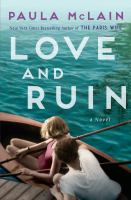Well, it’s 2023, which feels like a strange and unwieldy number for a year to be after the neat symmetry of 2022. I thought for today’s post it would be interesting to look at different events that occurred exactly 100 years ago, and feature various books, movies, and resources for you to explore corresponding to those events. For one thing, ‘those who do not learn from history are doomed to repeat it’, and for another…this makes learning history fun! (For me, at the very least, but hopefully for you too). Without further ado, let’s jump right in.
January | The USSR (Union of Soviet Socialist Republics) aka the Soviet Union is established after a period of revolution. Red Star Over Russia by David King has a self-explanatory subtitle; it’s a Visual History of the Soviet Union From the Revolution to the Death of Stalin: Posters, Photographs and Graphics From the David King Collection. I’m a visual learner myself, and this graphic book is eye-catching and eye-opening, and reminds readers of the intersection of art and politics as a revolutionary incentive, as propaganda, and as an art movement in and of itself.
Continue reading

 Following her last novel, 2015’s
Following her last novel, 2015’s